“I want to use these Parenting with ABA tools in my home, but I don’t know where to start!”
“I see all these posts about connecting with my kids better, managing my own feelings, teaching my kids, helping my kids get along, using visual supports- but I don’t know how to begin!”
If you’ve had these same thoughts, you are not alone! I’ve heard many parents express feeling unsure how to begin implementing the behavioral techniques I teach and know to be effective.
Here’s how to get started using Parenting with ABA tools in your home. (Tools that are all backed by a ton of behavior science evidence & research!)
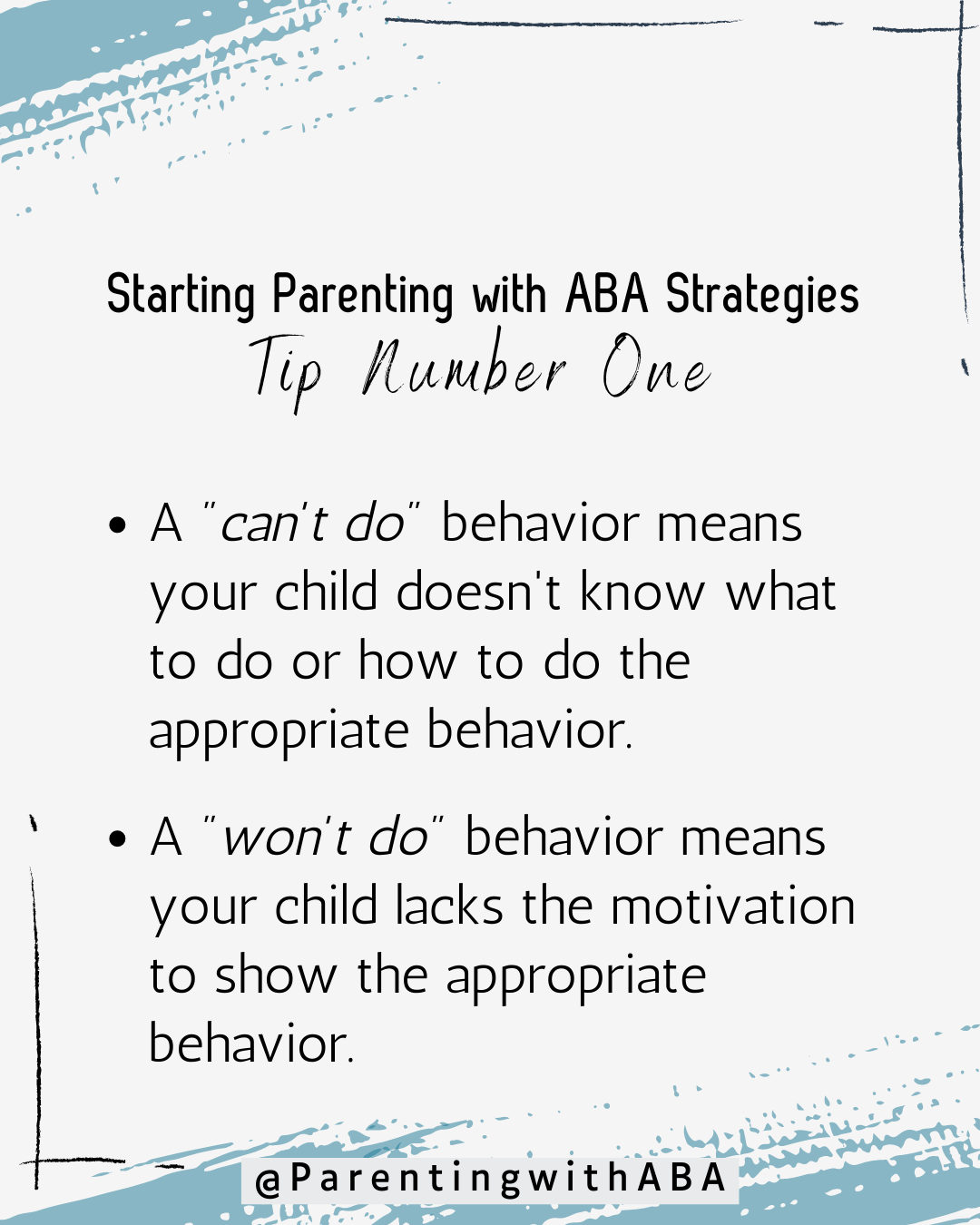
Tip #1: Flip your parenting perspective to building up skills and motivation.
When you hear yourself saying ‘stop’ or ‘no’ a lot, what can your child do instead?
Instead of squashing and eliminating problem behaviors, flip your point of view to build up the lacking skills or build up the motivation to do the replacement behavior.
When dealing with a problem behavior, whether it’s something big like major tantrums or aggression or something smaller like needing 17 reminders to get daily living tasks done, we need to consider if this is a can’t do or a won’t do situation.
A can’t do means your child doesn’t know what to do exactly in that moment. In this specific context (with all the things going in their world and their mind at that exact moment), they really cannot recall the right thing to do instead. In a can’t do situation, they need you to guide, show, and teach.
A won’t do means motivation for the appropriate behavior is lacking. It’s not worth it to your child in that exact context, that exact moment. In a won’t do situation, we need to find ways to make it easier for the appropriate behavior to happen and more worth it to your child.
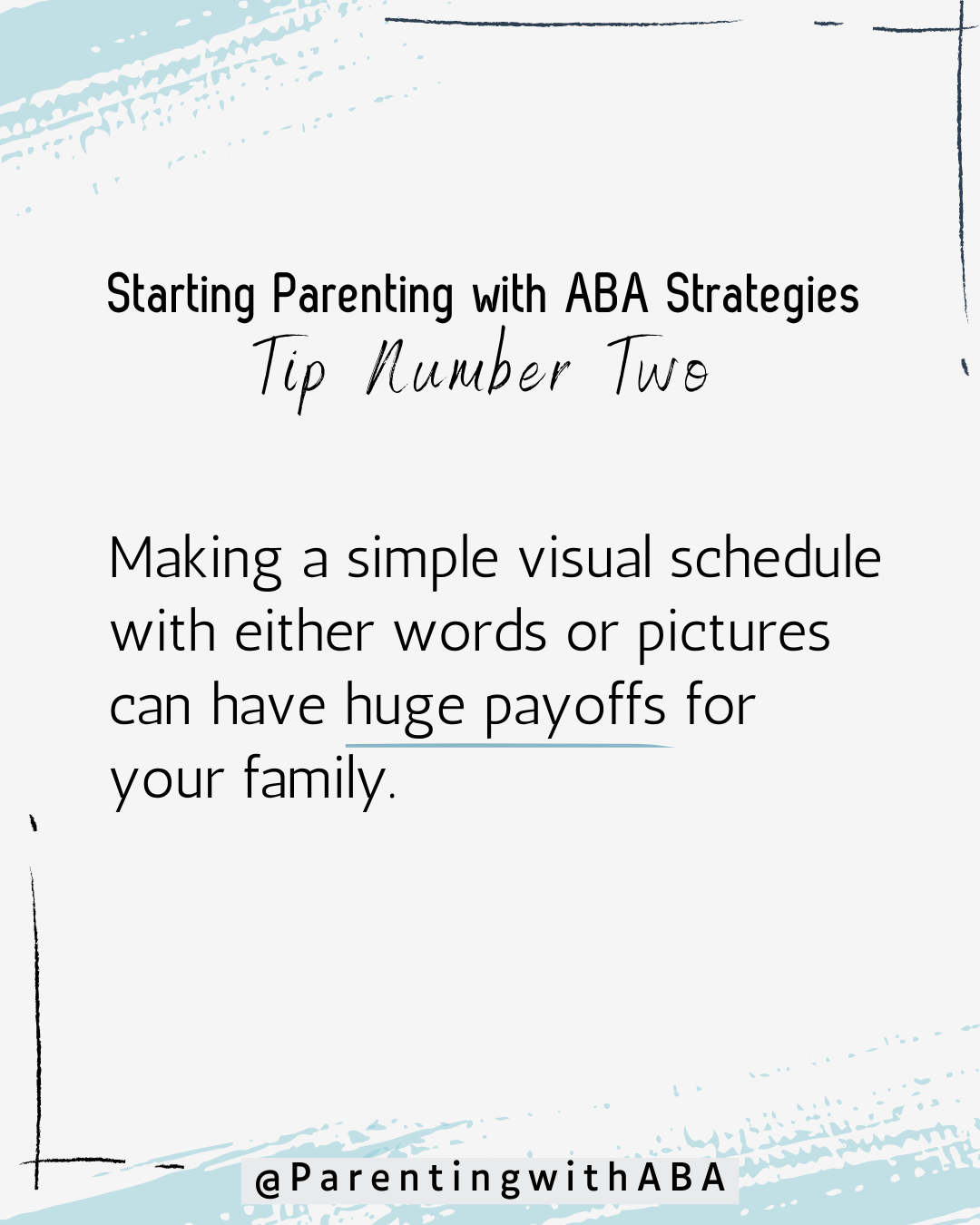
Tip #2. Use environmental supports such as visual schedules and routines.
To-do lists, calendars, and checklists are things we use every day as adults. Do your kids have this same level of support?
If you keep your calendar/ schedule on your phone or computer, do your kids have access to it or a paper version so they can see what’s happening each day?
Making a simple visual schedule with either words or pictures can have huge payoffs for your family. Not remembering/ now knowing what is coming next is uncomfortable at best, anxiety-provoking at worst. If your child is uncomfortable or anxious, are you likely to see their best side? You won’t see my best side if I’m uncomfortable or anxious, that’s for sure! Ease some of the what comes next stress by simply putting it on paper for them to see.
“But, Leanne, we do the same thing every week! Do we really need a schedule that shows we have soccer practice on Tuesday nights?!” – Yes, you do. Because even though it is routine, your child can’t be expected to remember that routine all the time when they are doing super important things like playing, learning, and growing.
Visuals can be for calendars and schedules, and also for the individual steps of routines that are done every single day. If you hear yourself repeating things like, “Did you brush your teeth before bed?” every single day- put it on paper. If your child is a reader, put it in writing. If your child prefers pictures, use a free tool like canva.com. Even better- let your child make their own visual cues/ supports to get their buy-in from the get-go!
Tip #3 Ask for help when you need it.
Parenting is the hardest job. And it keeps changing every minute!
With so much parenting information and advice out there, it can be overwhelming and exhausting to figure out what to do or who to trust. Reach out to me to ask for me to point you in the direction of a blog post or downloadable resource on a specific topic.
And definitely be sure to schedule your free parent coaching brainstorming session at the link below!
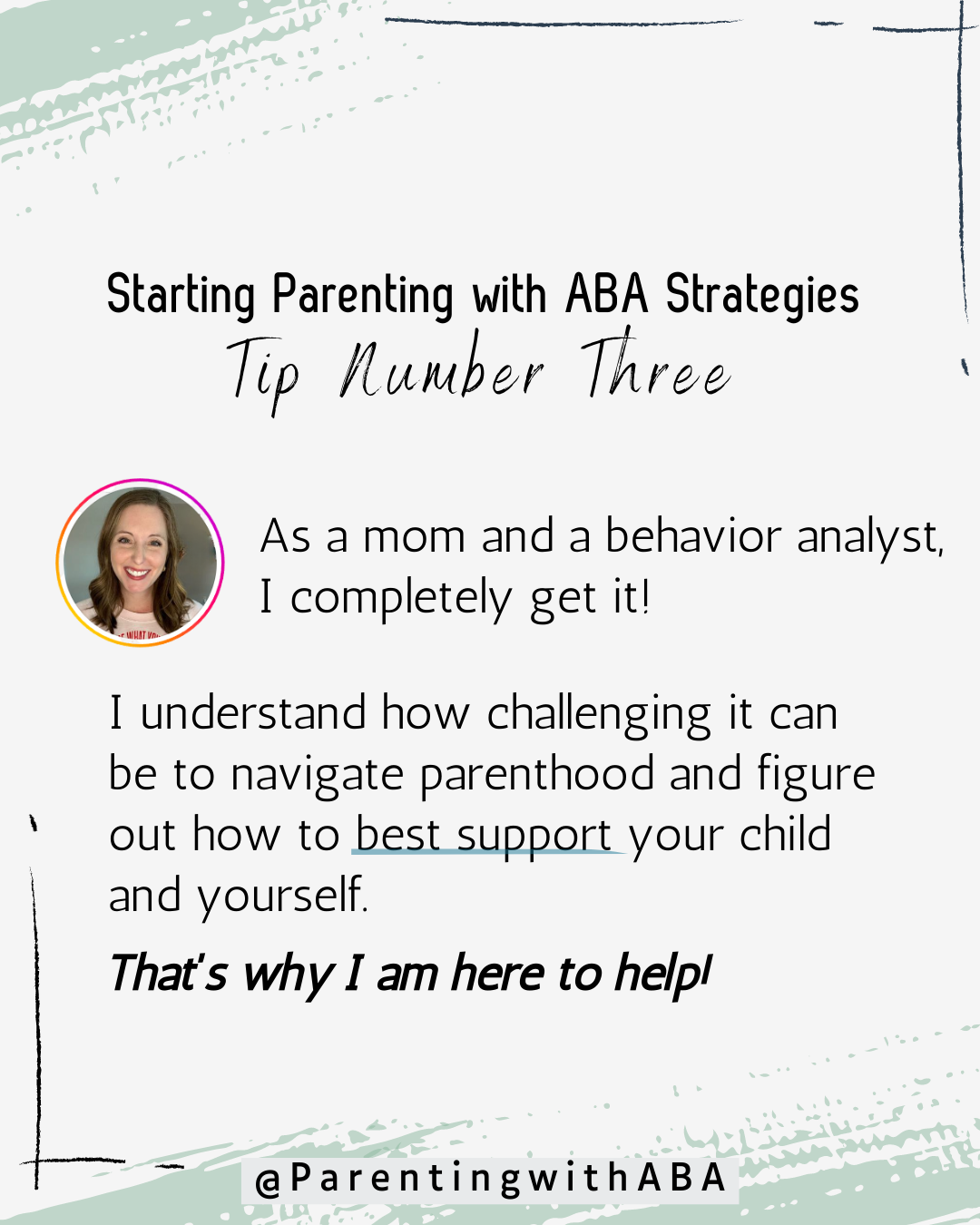
If you don’t reach out to me, reach out to someone else! A friend, family member, or a professional who can hold your hand through the hard parts and save your sanity.
I do encourage you to seek parenting advice rooted in science and not some random online person’s good ideas.
Behavior analysis is the science of behavior. Parenting tools rooted in this science are evidence-based and you can stand on that firm foundation knowing that what you are doing is legit.
Tip #4 Celebrate your wins!
The fact that you are reading this right now tells me that you are a good parent.
You are seeking information to help your parenting.
That’s HUGE!
You are already doing so many good things! Please don’t get so caught up in all the things you need to improve that you forget to stop and celebrate.
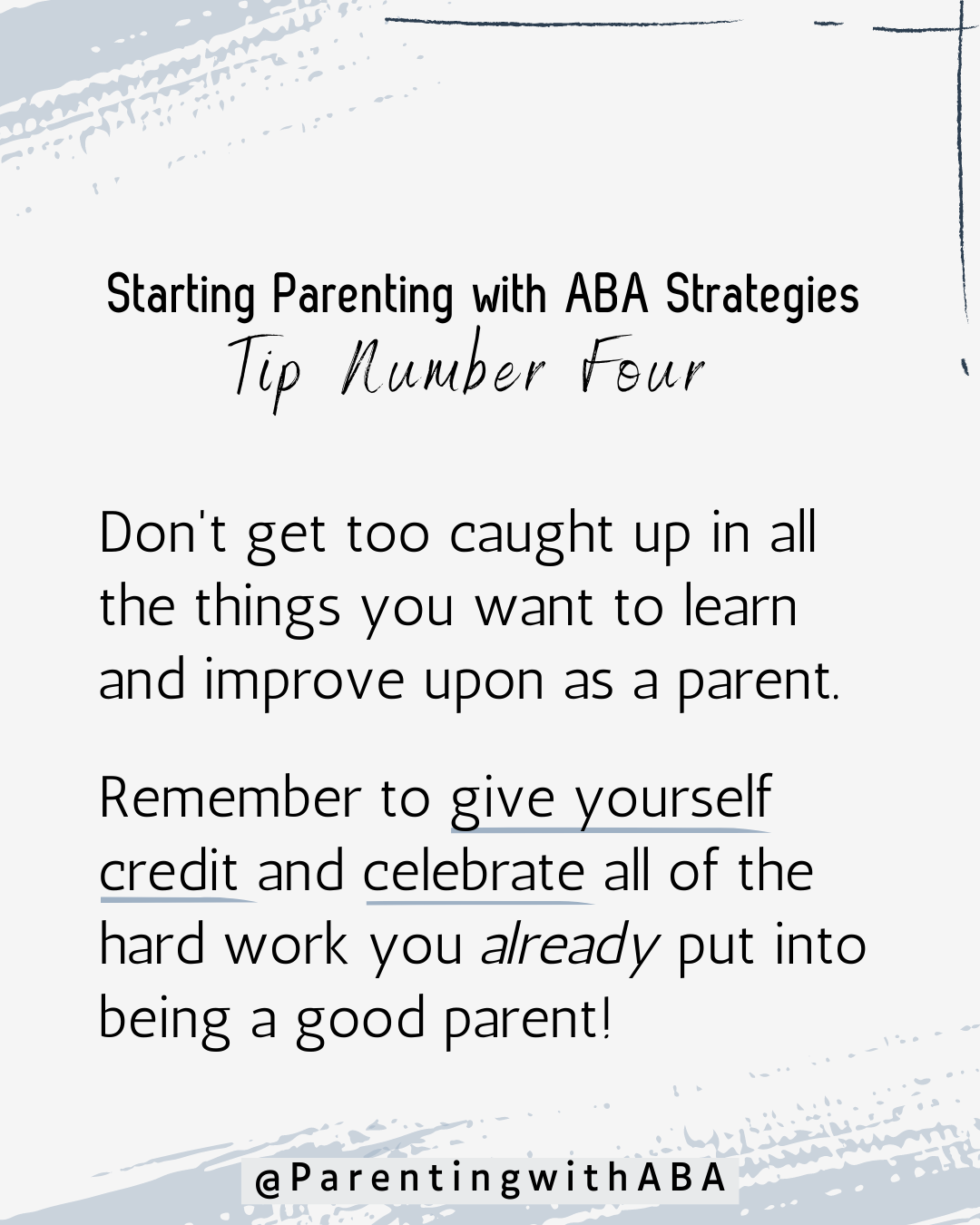
You deserve all the praise, the high fives, and the rewards. You are working so hard as a good parent! Give yourself a little credit!
When you are ready for more support, set up your free parent coaching brainstorming session here: Free Brainstorming Session!
I can’t wait to hear what great wins you will have with your family!
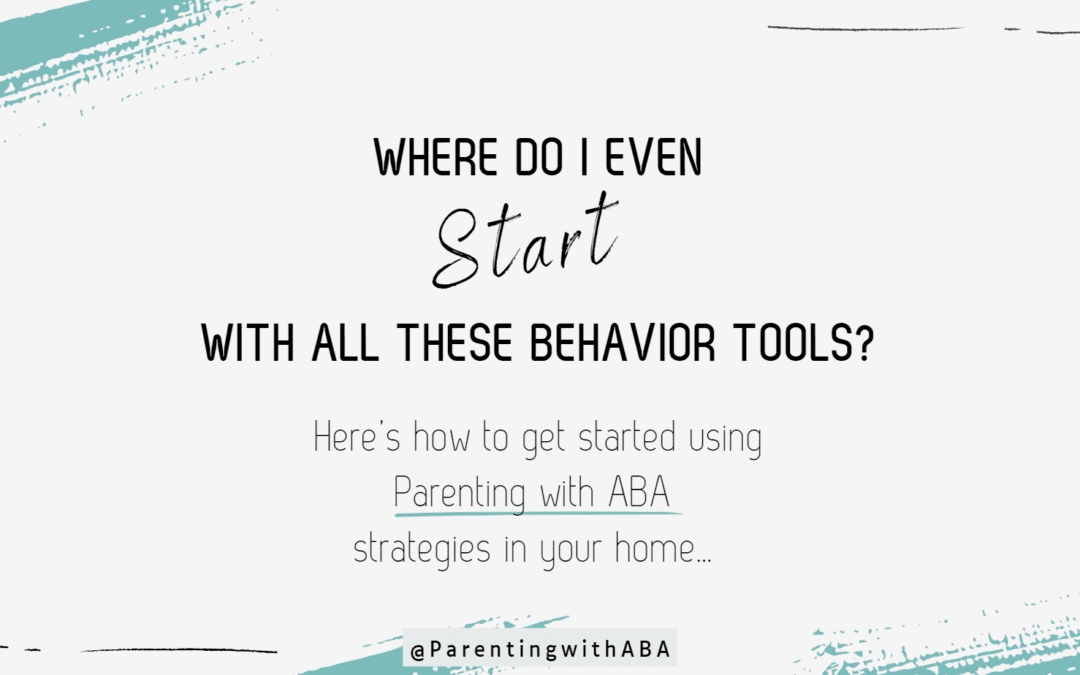
Recent Comments